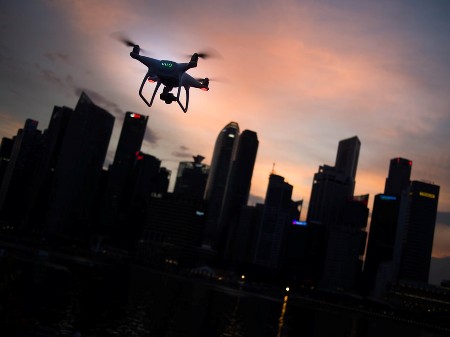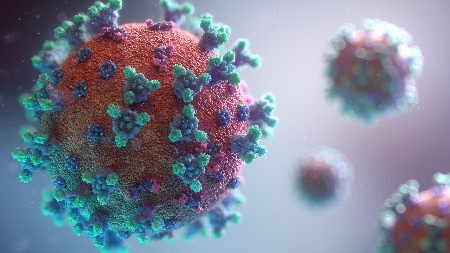June 11, 2020 – Smart cities have technology to help stop the spread of viral threats like COVID-19 in densely populated areas. Here are five ways technology can help flatten the curve.
Although the current global pandemic spread owes much to 21st-century technology, we can also use some of that wizardry to help track and control the threat in real-time.
Undoubtedly there will be lots of reflection once the COVID-19 pandemic passes. We will be reviewing emergency response plans and cities in the future will be able to apply the lessons learned to prepare themselves for similar threats. City leaders and scientists will look at the best ways to manage social distancing, disease tracking, and other defenses that help flatten the curve.
Smart city technology can play a major role in stopping disease spread in densely populated urban areas, and many are already outfitting themselves with the tools that they will need for the next pandemic.
How smart cities will be able to stop a pandemic in urban areas will depend on:
- Autonomous and contactless systems
- Disease tracking and artificial intelligence
- Geolocation
- A Ubiquitous Internet
- Drone and Robotic Surveillance
Autonomous and Contactless Systems
You’ve probably heard the term contactless delivery a lot over the past few months as social distancing and shelter in place orders have gone into effect. Autonomous delivery represents the best way to execute contactless interaction eliminating the need for a human deliverer to be involved in the transportation of goods.
We are just at the outset of implementing autonomous delivery. Expect to see in the near future self-driving trucks, more autonomous ships, and delivery drones that will make contactless a normative process that will ensure people are not inadvertently exposed to a virus through community spread.
Smart cities that develop autonomous delivery systems in their disaster response plan will include prioritizing essential delivery services such as those delivering medicine and food during an emergency.
Disease Tracking
The Internet of Things (IoT) allows software companies to track outbreaks using big data and language processing. BlueDot, a dashboard application that combines public health and medical expertise with AI algorithms, can assess risk and provide notification of infectious disease outbreaks. Developed by a team of epidemiologists, artificial intelligence and natural language processing experts, BlueDot sent out the first known alert of an unusual cluster of pneumonia cases in Wuhan on December 30th, ten days before the World Health Organization (WHO) issued any public statement on COVID-19. Smart cities can now benefit from the expertise of this type of application to do disease tracking in real-time, allowing citizens to be aware of immediate risks.
Geolocation
Geolocation applications on smartphones allow for the tracking of user locations in real-time. Initially designed to allow people to track where their friends are, and parents to keep a remote eye on their children’s whereabouts, the applications have a much more powerful use when the data can trace the path of a disease spreading through a community and predict what areas are most at risk. Smart cities in the future will use this type of data to predict which urban areas need to be put into lockdown before community spread gets out of control.
A Ubiquitous Internet
Smart cities are wired cities. They don’t just use the Internet to help in decision making and in the dissemination of information to the public, but also implement free WiFi to allow citizens to always be connected, especially in the event of an emergency.
In New York City free public WiFi is available through information kiosks that serve to be effective communication hubs. So although a person may not have a smartphone, tablet, or laptop, information delivered over the Internet is accessible to them in thousands of locations across the city. Imagine during a pandemic how this helps to facilitate paperless and ubiquitous communication.
Drone and Robotic Surveillance
Some see the arrival of semi and fully autonomous drones as the beginning of a surveillance state. For example, in China, drones have been used not just to survey the population tracking community spread, but also to enforce stay-at-home orders.
Using drone surveillance lets police shelter in place while still doing their jobs. They can monitor citizens’ movements through the onboard cameras. Some even have infrared cameras to detect a person’s body temperature, revealing if a citizen is running a fever, one of the symptoms that has been used to identify COVID-19 infection.
Recently I wrote about a robot dog named Spot that is patroling a park in Singapore to ensure visitors keep social distancing. Spot can operate autonomously or be directed by a remotely-located human attendant who can see through the robot’s eyes and speak to someone in the event of an emergency.
If you’re interested in learning more about smart city technology benefits beyond pandemic response, check out this visual provided by The Zebra below.


















